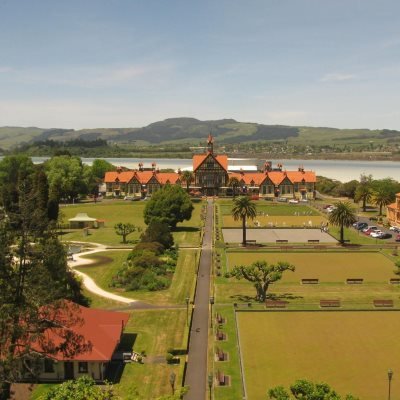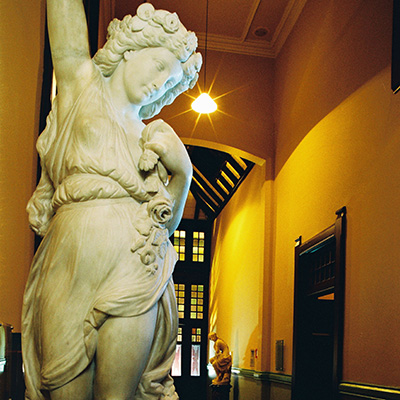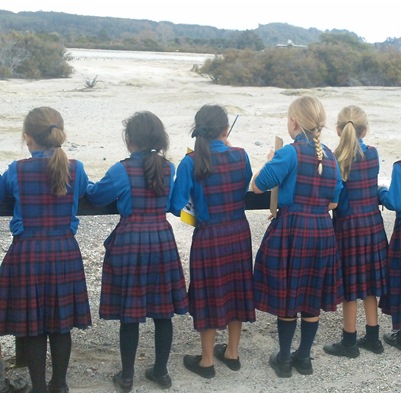Before Tarawera erupted – keeping the Terraces alive
Wednesday, 8 June 2016
In the early hours of 10 June 1886, Mount Tarawera erupted with astonishing force.
The eruption killed more than 120 people, most of them Maori – living in small villages in the surrounding area.
From that day to this, the Tarawera eruption lives in the collective memory of New Zealanders, not only for the large loss of life, but the loss of a national treasure and 8th wonder of the world: the Pink and White Terraces of Lake Rotomahana.
Sinter Samples taken before the eruption
At Rotorua Museum we are fortunate to have a collection of 35 sinter samples, that include fossilised flora and small branches embedded with silica, which are said to be from the Pink and White Terraces of Rotomahana.
The collection was accumulated by James Stewart (1832-1914), a civil engineer and surveyor, working in the Rotorua district in the early 1880s. During this time Stewart explored a road link from Rotorua to Cambridge, and was later involved in the planning of an early rail link from Rotorua to Morrinsville.
It is said that Stewart collected the samples prior to the June 1886 eruption.
The Stewart family sold the collection in the 1970s, where they were stored at a bach on Rangitoto Island, Auckland. The collection was later sold at a Dunbar Sloane auction, and then on-sold at an International Art Centre auction in November 2013.
The collection is now closer to home and housed by Rotorua Museum .
The museum is privileged to have samples and remnants from this astounding natural wonder; which is of even greater significance given the recent findings and exploration results of Geological & Nuclear Scientists (GNS).
The land and lake recovers
The devastated state of Lake Rotomahana after the 1886 eruption led many New Zealanders to believe, the Pink and White Terraces had been destroyed, lost, or at best, permanently entombed under rock and volcanic sediment.
In the months after the eruption, Lake Rotomahana returned. Water from surrounding streams began to flow into the volcanic craters gradually creating a new lake four times deeper and covering an area approximately five times the size of the original.
By the end of 1886, the area where the Pink and White Terraces had once stood was under tens of metres of lake water, where they seemed to be lost forever.
It would be another 128 years before the world would learn their true fate…
The true story uncovered
Using mapping, high resolution imaging, sonar and a range of other techniques a team from GNS uncovered much of the mystery that lay beneath Lake Rotomahana. They established the geothermal system at the lake was still active and produced a bathymetric map of the lake floor 400 times sharper than any other.
But perhaps of even greater significance, was that in the process, they had identified pieces of the lakes two famous terraces.
Despite being drowned and buried by over a century of sediment; segments of the terraces had somehow, partially survived the eruption of 1886.
However only a mere 10% of the Pink Terraces seem to have survived, and even less of the White Terraces and this fact only added to the rarity of the discovery for researchers.
For its violent and destructive force, the eruption of Tarawera and the discovery of parts of the terraces, adds a second layer to interpretations of that fateful night.
The fact that only fragments of the terraces remain today, suggests that the majority of the treasured terraces were destroyed by the violent eruption, occurring most likely soon after it began – sudden in nature as opposed to a gradual loss.
The extent of damage and destruction alongside surviving parts of the landscape proves that even in the face of frightful, destructive power, somethings can and in-fact do survive.











